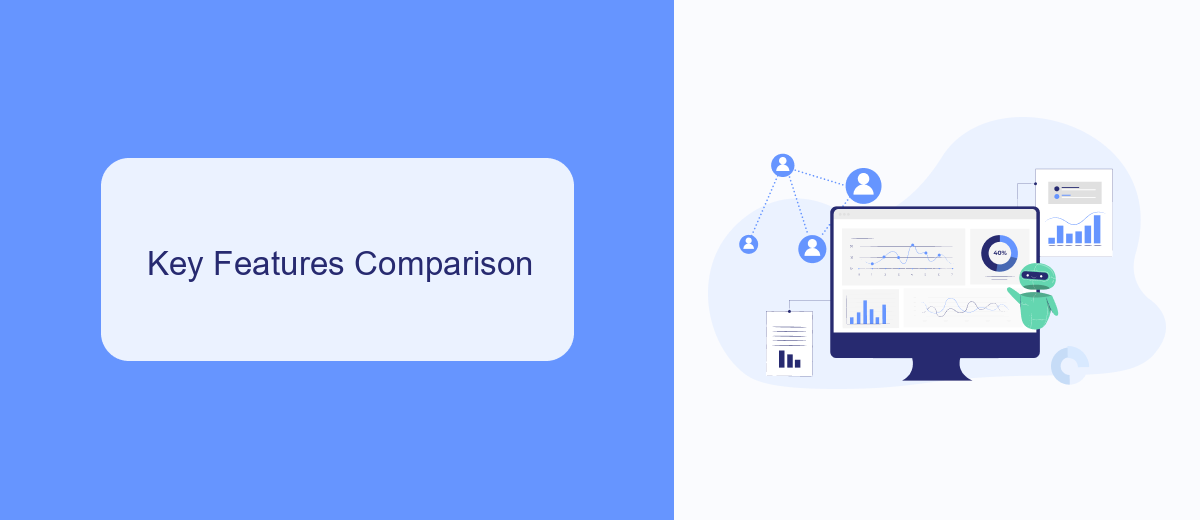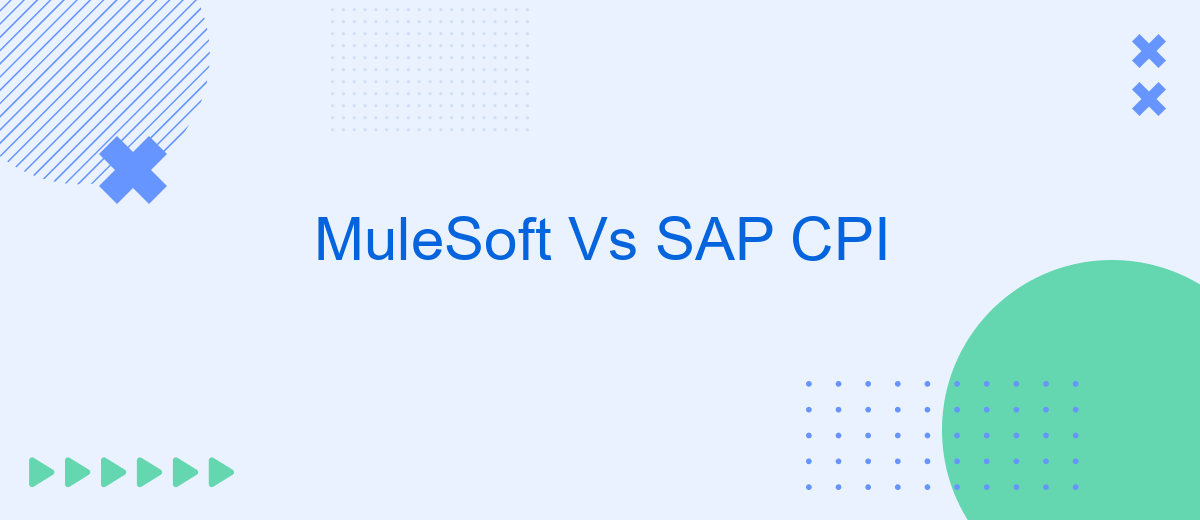In the rapidly evolving landscape of enterprise integration, choosing the right platform is crucial for seamless connectivity and efficiency. MuleSoft and SAP Cloud Platform Integration (CPI) are two leading contenders, each offering unique features and capabilities. This article aims to provide a comparative analysis of MuleSoft and SAP CPI, helping businesses make an informed decision tailored to their integration needs.
Introduction
In today's rapidly evolving digital landscape, businesses are continuously seeking effective solutions to streamline their integration processes. Two of the most prominent platforms in this space are MuleSoft and SAP Cloud Platform Integration (CPI). Both offer robust tools to connect disparate systems, automate workflows, and enhance overall operational efficiency.
- MuleSoft: Known for its powerful Anypoint Platform, MuleSoft provides a comprehensive suite for API-led connectivity.
- SAP CPI: A key component of SAP's broader cloud strategy, CPI excels in integrating SAP and non-SAP applications.
- SaveMyLeads: This service simplifies the process of connecting various applications and automating data transfers, making it a valuable addition for businesses looking to optimize their integrations.
Choosing between MuleSoft and SAP CPI depends on various factors, including existing infrastructure, specific business needs, and long-term strategic goals. Understanding the strengths and limitations of each platform can help organizations make informed decisions that align with their integration objectives.
Key Features Comparison

When comparing MuleSoft and SAP CPI, one of the key features to consider is their integration capabilities. MuleSoft offers a comprehensive platform with a wide range of connectors and pre-built APIs, which facilitate seamless integration with various systems and applications. Its Anypoint Platform provides tools for designing, deploying, and managing APIs, making it a versatile solution for complex integration scenarios. On the other hand, SAP CPI (Cloud Platform Integration) is tightly integrated with SAP's ecosystem, offering robust support for SAP applications and services. It provides a user-friendly interface and pre-packaged integration content, which simplifies the integration process for SAP-centric environments.
Another important aspect is the scalability and flexibility of these platforms. MuleSoft's architecture is designed to handle high volumes of data and transactions, making it suitable for large enterprises with extensive integration needs. It also supports a variety of deployment options, including on-premises, cloud, and hybrid environments. SAP CPI, while also scalable, excels in scenarios where businesses are heavily invested in SAP solutions. It ensures smooth data flow between SAP and non-SAP systems, enhancing operational efficiency. Additionally, services like SaveMyLeads can further streamline integration processes by automating lead data transfers, thereby reducing manual effort and improving accuracy.
Architecture and Integration

MuleSoft and SAP CPI are both powerful integration platforms, but they have distinct architectural differences. MuleSoft's architecture is based on the Anypoint Platform, which provides a unified solution for API management and integration. This platform uses a microservices architecture, allowing for scalable and flexible integrations. On the other hand, SAP CPI (Cloud Platform Integration) is part of SAP's Integration Suite and is designed to facilitate seamless integration between SAP and non-SAP applications through pre-built connectors and integration flows.
- MuleSoft's Anypoint Platform supports on-premises, cloud, and hybrid deployments, providing extensive flexibility for various integration needs.
- SAP CPI offers deep integration capabilities with SAP applications, leveraging SAP's extensive ecosystem and pre-packaged integration content.
- Both platforms support RESTful APIs, SOAP, and various messaging protocols, ensuring compatibility with a wide range of applications and services.
When configuring integrations, tools like SaveMyLeads can simplify the process by automating data transfers between different systems. This service can be particularly useful for businesses looking to streamline their workflows without extensive manual intervention. Ultimately, the choice between MuleSoft and SAP CPI will depend on the specific integration requirements and existing IT infrastructure of the organization.
Pricing and Licensing

When comparing MuleSoft and SAP CPI, pricing and licensing are critical factors to consider. MuleSoft offers a subscription-based model that scales with the number of users and the volume of data processed. SAP CPI, on the other hand, provides a more traditional licensing model, which can be more predictable for enterprises with stable integration needs.
MuleSoft's pricing can be more flexible, allowing businesses to start small and expand as their integration needs grow. SAP CPI’s pricing is often more rigid but can be advantageous for large organizations with extensive SAP landscapes.
- MuleSoft: Subscription-based, scalable pricing
- SAP CPI: Traditional licensing, predictable costs
- SaveMyLeads: Affordable, easy-to-use integration service
Each platform has its strengths, and the best choice depends on your specific requirements and budget. For those seeking a cost-effective solution for simple integrations, SaveMyLeads offers an alternative worth considering. It provides an affordable and user-friendly service to help businesses streamline their integration processes without the complexity of larger platforms.
Conclusion
In conclusion, both MuleSoft and SAP CPI offer robust solutions for enterprise integration, each with its own unique strengths and capabilities. MuleSoft stands out with its extensive API management features and a wide range of connectors, making it a versatile choice for diverse integration scenarios. On the other hand, SAP CPI is deeply integrated with the SAP ecosystem, providing seamless connectivity for businesses heavily invested in SAP applications.
Ultimately, the choice between MuleSoft and SAP CPI will depend on your specific business needs and existing technological landscape. For organizations seeking an additional layer of automation and integration, services like SaveMyLeads can further streamline processes by enabling efficient data transfer between various platforms. By carefully evaluating the strengths of each platform and considering supplementary tools, businesses can achieve a more cohesive and efficient integration strategy.


FAQ
What are the primary differences between MuleSoft and SAP CPI?
Which platform is more cost-effective for small to medium-sized businesses?
How do MuleSoft and SAP CPI handle scalability?
What kind of support and community resources are available for MuleSoft and SAP CPI?
Can third-party services assist with automation and integration setup for MuleSoft and SAP CPI?
Would you like your employees to receive real-time data on new Facebook leads, and automatically send a welcome email or SMS to users who have responded to your social media ad? All this and more can be implemented using the SaveMyLeads system. Connect the necessary services to your Facebook advertising account and automate data transfer and routine work. Let your employees focus on what really matters, rather than wasting time manually transferring data or sending out template emails.
